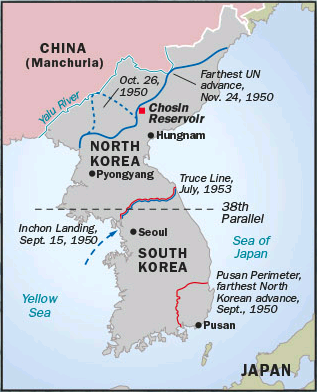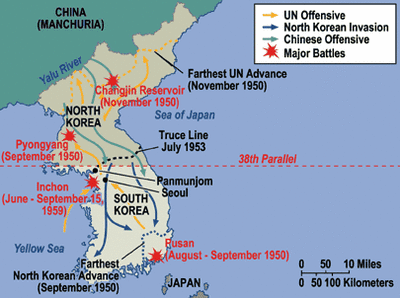

By May 1949 it was at 630,000 and shrinking. Consequently, America’s mighty war machine was being quickly disassembled.īy 1948, the US army was down to 677,000 men. bill, get a job, buy a home in the suburbs, and start families. Having survived both the Great Depression and World War II, it was time to go to college on the G.I. The fate of Korean aid had become intertwined with the desire by many Americans to get on with the business of their own lives. In January 1950, when aid to South Korea was up for renewal the US House defeated the bill, thereby cutting off all aid to South Korea. They sent light arms and armor, but withheld tanks and aircraft. Congress had become nervous that if too much aid were given to South Korea, Rhee would use it to invade the North. By June only 500 American military advisors remained. On January 12, Undersecretary of State Dean Acheson told the press that South Korea was not a vital part of the US defense perimeter in Asia. The Soviets withdrew from North Korea, but US withdrawal from South Korea was repeatedly delayed to allow time for Rhee to improve South Korea’s security situation.īy 1949, the US was disengaging from Korea in every way. The North Korean leader was even worse than his South Korean counterpart Sung often had his political enemies executed.īy the end of 1948, the Korean peninsula was divided into two different nations, each with a leader who boasted about conquering the other, each supported by their ideological counterparts. Meanwhile, the Soviets oversaw the creation of the communist Democratic People’s Republic of Korea (North Korea), led by Kim Il-Sung, a former anti-Japanese guerilla fighter a communist who had fought alongside the Russians at Stalingrad. Hodge refused to permit democratic elections, and at one point, martial law was declared. When Hodge finally turned to Koreans for help in administering their own country, it was to those who had collaborated with the Japanese. After accepting the Japanese surrender, Hodge put key Japanese colonial administrators back in charge, much to the dismay of the Koreans. Hodge, instantly disliked the Korean people.
#Strategic war map korean war free
The US was totally unprepared for administering a free South Korea.

Even as Russian troops stopped at this artificial dividing line, American units were still a month away from arriving in Korea. The US was lucky that Stalin agreed to the division. The Americans, trying to limit Russian gains, hastily proposed a division of Korea between Soviet forces in the north, and US forces in the south, with the 38th Parallel as the dividing line, picked by some junior officers who thought it looked roughly in the middle, where the peninsula narrowed. With the Japanese withdrawing, nothing stood in the way of the Soviets taking over the entire peninsula. Weeks earlier at Potsdam President Truman had gotten Soviet leader Joseph Stalin to commit to declaring war on Japan, including attacks against the Japanese in Korea.

The Japanese surrender and withdrawal from Korea created a power vacuum there.


 0 kommentar(er)
0 kommentar(er)
